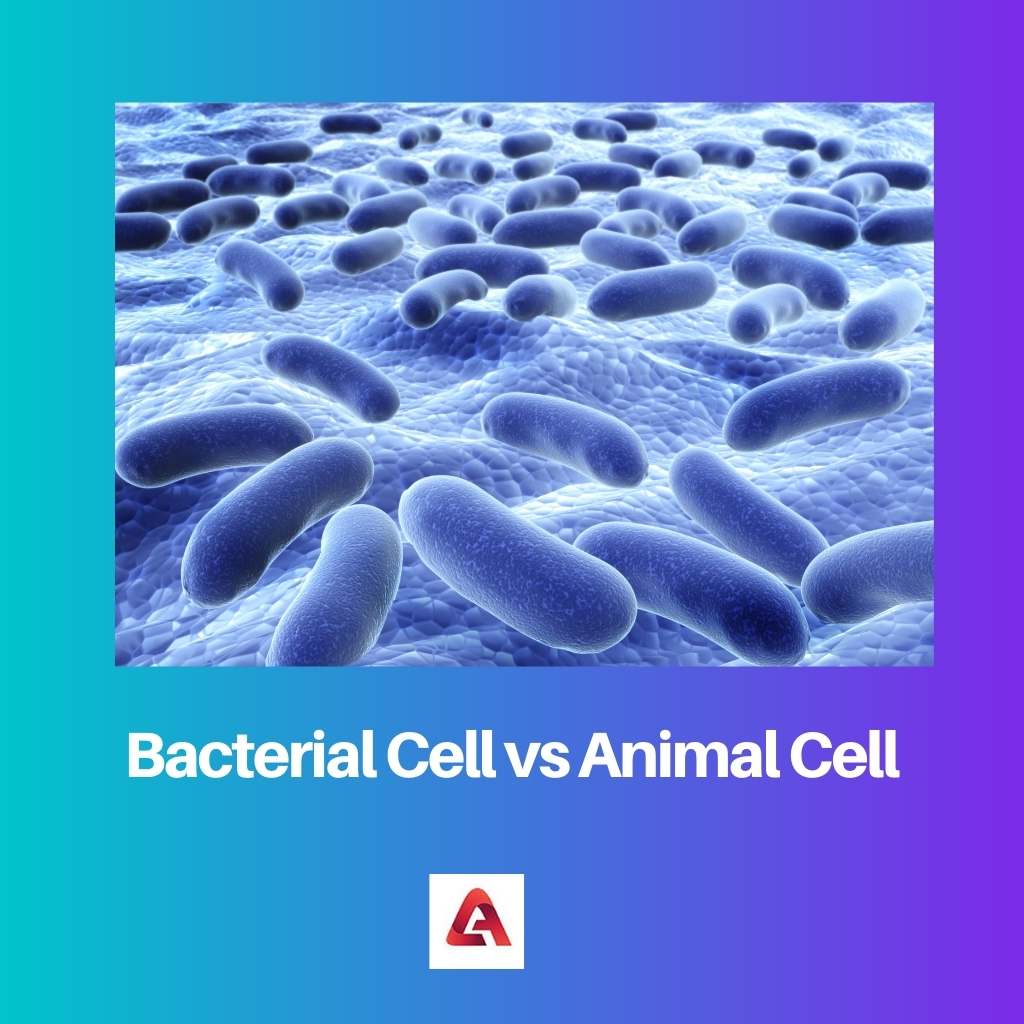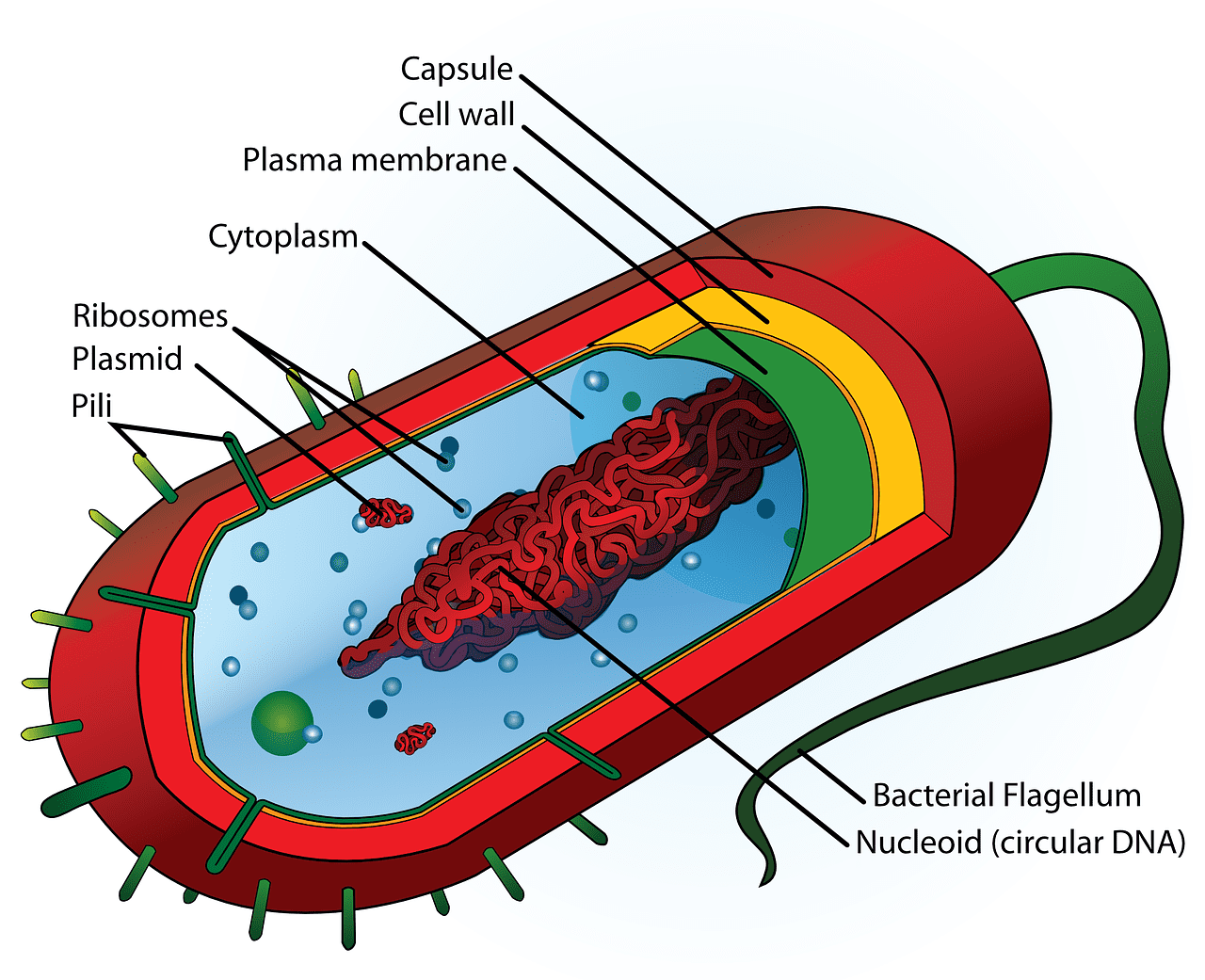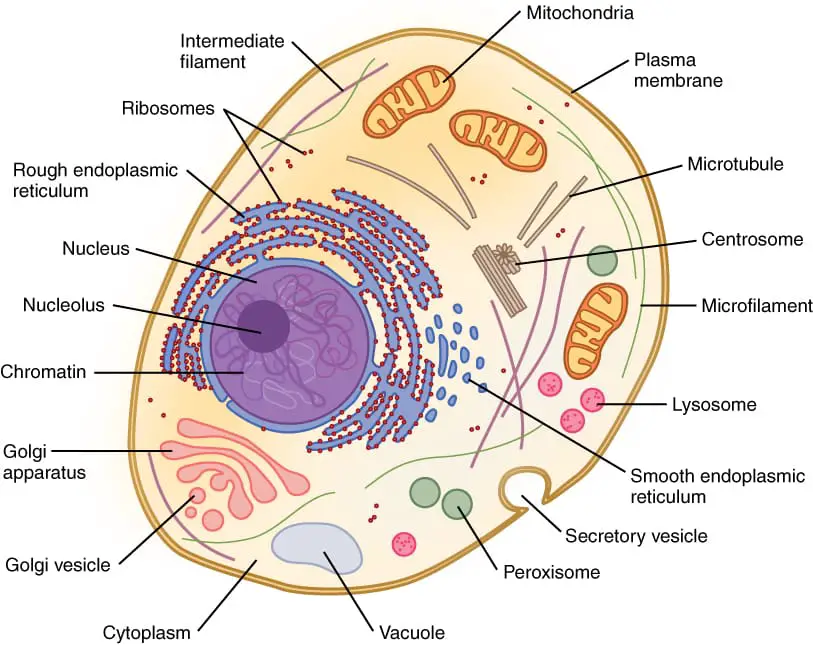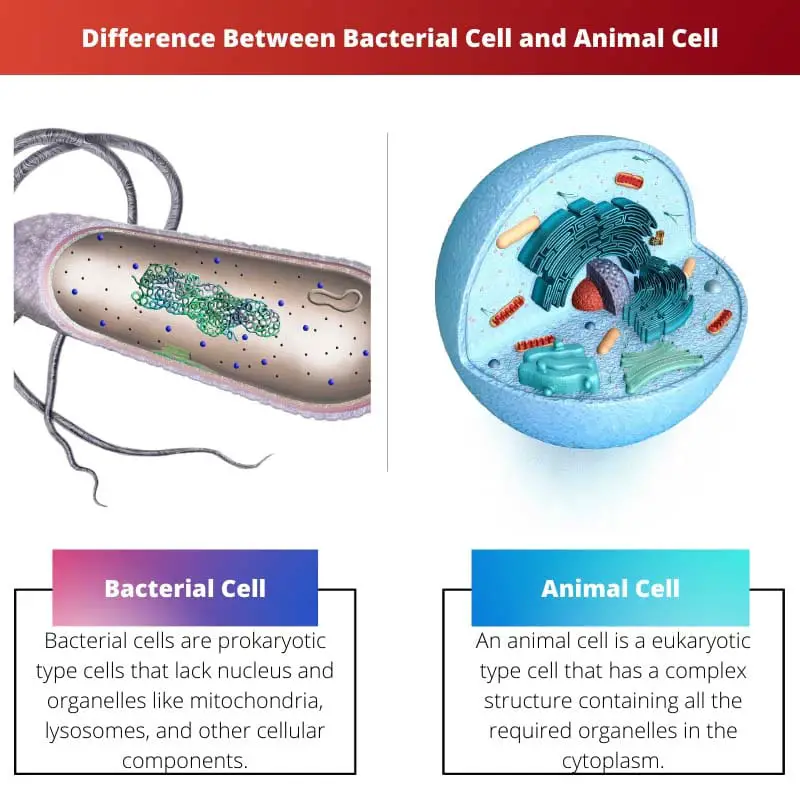The cell is the smallest structural and functional unit, the basic building block of all living organisms. The cell contains three main parts: the cell membrane, the nucleus, and the cytoplasm.
These three components of the cell vary in different species, and thus the cells differ in characteristics. Bacterial cells and animal cells are two types of living cells that belong to different kingdoms. Both these cells differ from each other in many ways.
Key Takeaways
- Bacterial cells are smaller and simpler in structure than animal cells, with no nucleus or membrane-bound organelles.
- Animal cells are larger and more complex, containing a nucleus and various organelles that perform specific functions.
- Bacterial cells reproduce asexually by binary fission, while animal cells reproduce sexually or asexually through mitosis.
Bacterial Cell vs Animal Cell
The difference between the bacterial cell and the animal cell is that the Bacterial cell lacks a well-defined membrane nucleus and organelles which are present in the animal cell along with the cytoplasm. Bacteria are unicellular organisms which means it contains only one cell for carrying out all kinds of life processes, whereas animals are multicellular organisms and thus contain more than one cell.

Bacterial cells are prokaryotic type cells that lack nucleus and organelles like mitochondria, lysosomes, and other cellular components, but there is an irregular-shaped region inside the cell that contains circular DNA known as plasmids, this region is known as the nucleoid.
It has a well-defined cell wall that provides rigidity, support, and strength to the bacterial cell.
An animal cell is a eukaryotic type cell with a complex structure containing all the required organelles in the cytoplasm and a well-defined nucleus with a membrane around it that performs all the life processes.
An animal cell is larger and has a linear type of DNA inside the nucleus which contains all the genetic information.
Comparison Table
| Parameters of Comparison | Bacterial Cell | Animal Cell |
|---|---|---|
| Membrane | The nucleus does not contain well- defined membrane. | The nucleus contain well- defined membrane. |
| Chromosome | It contains a single chromosome. | It contains several chromosomes. |
| Reproduction ways | Reproduction takes place asexually by the process of binary fission and sexually by conjugation. | Reproduction takes place asexually by mitosis and sexually by meiosis. |
| Organelles | No cell organelles are present. | Cell organelles which are cell bound are present in the cytoplasm. |
| Cell shape | Well-defined cell shape. | Irregular shape. |
What is Bacterial Cell?
Bacteria are unicellular organisms that contain only one cell. Based on the various types of shapes, Bacteria are divided into five different groups which namely are spherical (cocci), rod (bacilli), spiral (spirilla), comma (vibrios), or corkscrew (spirochaetes).
The bacterial cell falls into the category of the prokaryotic cell, which has the most simple structure for performing basic life processes or functions as it does not contain a well-defined or distinctive nucleus or any membrane-bound organelles in it.
Besides the complex structure, it has its own control centre, which contains the important genetic information inside the DNA, which has only a single loop.
Some of the bacterial cells contain an extra circular DNA in the cytosol known as a plasmid. Besides this, the cell contains only one chromosome.
The cell is very small in size as compared to the other cells, which are approximately around 0.2 to 10 microns in size. The bacterial cells are found as autotrophs, but some may be heterotrophs also.
The bacterial cell has a well-defined cell wall which is why the cell has a definite shape. Some of the bacteria are found to have fimbria on their surface.
These cells lack cytoskeleton and histone protein. Reproduction takes place both sexually and asexually as well.

What is Animal Cell?
An animal is a multicellular organism that is made up of more than one cell. The animal cell falls into the category of the eukaryotic cell, which has a complex structure for performing basic life processes or functions as it contains all the components, which are a well-defined or distinctive nucleus along with membrane-bound organelles in the cytoplasm which help in performing all the necessary cellular functions.
The cell contains several chromosomes. The cell is larger, which is approximately about 1000 microns or even more in size. Animal cells are always found of the type heterotrophs.
The animal cell does not have a well-defined cell wall which is the major reason behind its irregular shape characteristic.
Due to the lack of a rigid cell wall around the cell, it can develop a diverse range of cell types, tissues, or organs, giving the great advantage of mobility to the animals. The animal cell does not have fimbria on its surface.
This cell contains a cytoskeleton, a network of tubules and filaments inside the cytoplasm, and also has DNA wrapped around the histone protein. Reproduction takes place both sexually as well as asexually.

Main Differences Between Bacterial Cell and Animal Cell
- The nucleus of the bacterial cell is not well-defined, and it does not contain a membrane around it, whereas the animal cell contains a well-defined, membrane-bound nucleus.
- The bacterial cell contains only one chromosome in it, whereas the animal cell contains a large number of chromosomes inside it.
- In both the bacterial cell and animal cell, reproduction takes place by both sexual as well as asexual means. In bacterial cells, asexual reproduction takes place by binary fission and sexual reproduction by conjugation, whereas in animal cells, sexual reproduction takes place by meiosis and asexually by mitosis.
- The bacterial cell does not have membrane-bound cell organelles like mitochondria, lysosomes, and other cellular structures, whereas the animal cell contains all membrane-bound organelles in the cytoplasm.
- The bacterial cell has a well-defined cell wall; thus, it has a well-defined cell shape, whereas the animal cell does not have a well-defined cell wall; therefore, the cell has no definite shape.

- https://www.annualreviews.org/doi/abs/10.1146/annurev.mi.21.100167.002221?journalCode=micro
- https://www.annualreviews.org/doi/abs/10.1146/annurev.bi.61.070192.002301?journalCode=biochem

The comprehensive overview of bacterial and animal cells in this article offered valuable insights into their structural and functional disparities. The in-depth coverage of cellular components, reproductive methods, and genetic characteristics contributed to a thorough understanding of these two cell types. This content was both engaging and educational.
This article provided an in-depth comparison between the basic structural and functional components of bacterial and animal cells. As a higher order of organisms, animal cells exhibit a greater degree of complexity. It was quite informative to learn about the key differences between these two types of cells and the unique characteristics of each type.
The differentiation between prokaryotic and eukaryotic cells, specifically bacterial and animal cells, was well-outlined in this article. The concise details regarding cellular structure, organelles, and reproductive methods provide a comprehensive understanding of the topic. Thank you for this informative piece.
The provided comparison table and detailed descriptions of bacterial and animal cells served to elucidate their dissimilarities. The well-defined membrane-bound nucleus and membrane-bound organelles in animal cells, as opposed to the lack of these structures in bacterial cells, were highlighted. The information provided was concise and informative.
The detailed description of bacterial and animal cells, along with their reproductive and genetic disparities, was particularly informative. The fundamental dissimilarities in cell structure, composition, and functions provided a comprehensive overview. This piece served as an engaging and enlightening resource for understanding cellular biology.
The comparison between bacterial and animal cells, particularly in terms of their genetic information and the presence of cell organelles, was presented in a clear and detailed manner. The distinctions in cellular structure, size, and reproductive processes were effectively communicated, enhancing my understanding of these fundamental biological entities.
It was insightful to learn about the reproductive methods and genetic characteristics that distinguish bacterial cells from animal cells. The article has succinctly conveyed the key features of both cellular structures, emphasizing differences in chromosome quantity and the presence of organelles. This comparative analysis enhanced my understanding of cellular biology.
This article has effectively presented the significant distinctions between bacterial cells and animal cells. The presence of characteristics such as the rigid cell wall in bacterial cells and the diverse range of cell types in animal cells were noted. The information was succinct and valuable for understanding the fundamental differences between these cells.